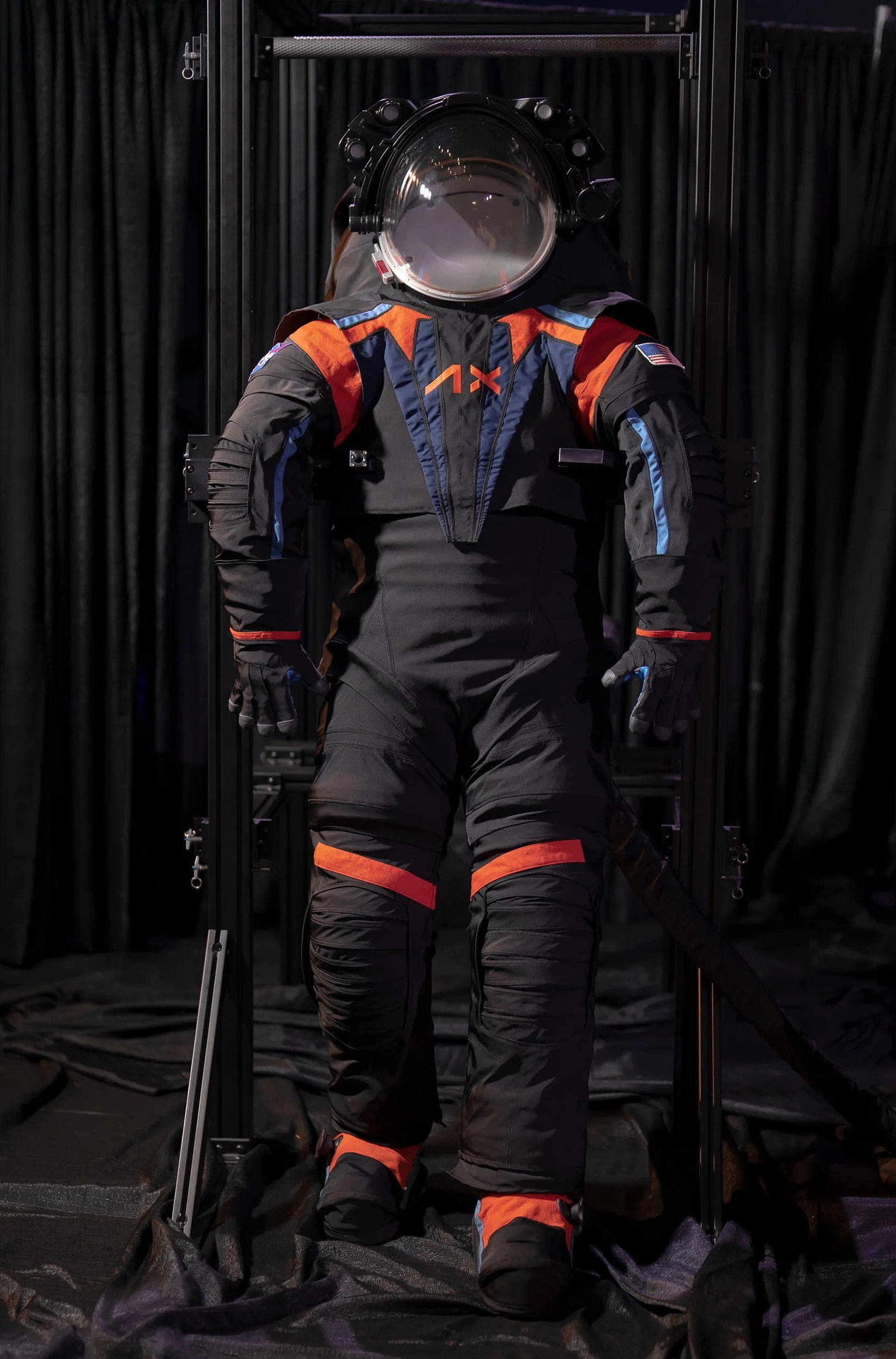Spacesuits revealed for Artemis 3 Moon landing
/When NASA astronauts return to the surface of the Moon in the next several years, they’ll be using a spacesuit built by Axiom Space.
The Axiom Extravehicular Activity Unit, or AxEMU, is based in part on designs developed by NASA over the last decade. The prototype was revealed on March 15, 2023, during an event at NASA’s Johnson Space Center in Houston.
“We’re carrying on NASA’s legacy by designing an advanced spacesuit that will allow astronauts to operate safely and effectively on the Moon,” Michael Suffredini, Axiom Space president and CEO, said in a company statement. “Axiom Space’s Artemis III spacesuit will be ready to meet the complex challenges of the lunar south pole and help grow our understanding of the Moon in order to enable a long-term presence there.”
Axiom Space is one of two providers developing spacesuits for NASA under the agency’s Exploration Extravehicular Activity Services, or xEVAS, contract. The other company is Collins Aerospace, which is developing spacesuits for the International Space Station.
Both companies are able to compete for task orders -- be they for low Earth orbit missions, or lunar sorties -- through 2034, with a maximum contract value of $3.5 billion, according to NASA. Each company retains ownership of their suits and can use them for other customers, not just the U.S. space agency.
According to Axiom Space, the Moon suits are built to provide increased flexibility and greater protection for the harsh lunar environment. It is expected to provide a longer baseline use duration -- about 8 hours vs the current 6.5 hours -- and has a helmet bubble that should provide more situational awareness than NASA’s current suits aboard the ISS.
The prototype shown off had a black and orange color pattern that was for display purposes to conceal some of the suit's proprietary designs. The Moon-bound suits are going to have a white outer layer in order to reflect heat and protect its users from extreme high temperatures, the company said.
While much of the design is based on work done by NASA over the years, there are some elements that were designed in house. Axiom Space said some of those items include the soft goods of the suit as well as the gloves.
Additionally, there are planned dust mitigation techniques, but the specifics of those haven’t been disclosed. Axiom Space said the company and NASA are looking at a number of solutions, including ways to clean the suit after a Moonwalk as well as disposable elements, such as a visor protector, etc.
“NASA’s partnership with Axiom is critical to landing astronauts on the Moon and continuing American leadership in space. Building on NASA’s years of research and expertise, Axiom’s next generation spacesuits will not only enable the first woman to walk on the Moon, but they will also open opportunities for more people to explore and conduct science on the Moon than ever before," said NASA Administrator Bill Nelson in an agency news release. "Our partnership is investing in America, supporting America’s workers, and demonstrating another example of America’s technical ingenuity that will position NASA and the commercial space sector to compete -- and win -- in the 21st century.”
Currently, Axiom Space is contracted to use these suits for the Artemis 3 mission, which is slated for no earlier than late 2025 or 2026. Both Collins Aerospace and Axiom Space can compete for future extravehicular task orders for the ISS or for Artemis 4 and beyond.
NOTE: While this article was written by Derek Richardson, it was originally published at Spaceflight Insidr.




